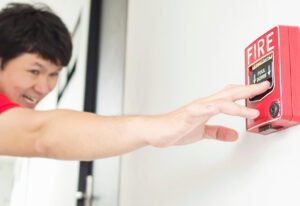Think of it as you are about to finish the project, but there are so many things that need to be done around here before a job is officially completed. It can be a challenge to keep track of all the smaller tasks. Try to create a list of tasks that need to be completed before the project is done, instead of scrambling for those loose ends at the end. In the future, you may use that list to verify that everything has been completed before the end of the payment period.
It’s known as a construction punch list process in the construction industry. A punch list contains the final items of work that are not completed before a project is deemed to be complete. Contractors shall add all works that do not fulfill the specifications of a construction contract as part of their punch list. Minor corrections, alterations, and repairs that are necessary before the release of the final payment shall normally appear on a punch list.
To complete and pay for projects, it is necessary to understand the punch lists. Such lists are designed to ensure that the work meets specifications and is completed by agreed standards. Details like the doors’ function, damage, and any issues which may arise are included in this report. As the project approaches completion, checks must be carried out to ensure all details are following agreed specifications and that no damage has occurred. It is important to understand the punch list so that we can complete work on schedule and receive payment.
Table of Contents
What is a Construction Punch List?
A construction punch list, also known as a snag list, is a document prepared near the completion of a construction project that lists all items that do not conform to agreed specifications. Since its inception, the construction industry has been using a “construction punch list” for this purpose.
For the confirmation that all has been completed in line with the owner’s wishes, this is usually the final stage of the project. In the past, contractors manually punched asterisks next to each item on a paper checklist so that they could indicate the completion of tasks, which identified all the smaller tasks that needed to be completed before an overarching project could be finished. It is also referred to as a snag list, deficiency list, or punch-out list. Only this aspect of the project should be subject to the importance of the construction punch list.
The construction punch list is a detailed schedule of the tasks that need to be done before any building can be occupied. This includes rapid repairs and is designed to take care of any issues that are not in alignment with the original plan. Significant savings can be derived from successful construction punch lists when it comes to issues in the field of construction. The concept of a construction punch list was derived from an actual process, where the project manager would fist holes on paper to indicate that his task had been completed. It is, on the other hand, both a construction plan and an assurance of quality in all projects.
What is the Construction Punch List Used for?
To double-check that all projects have been completed according to the owner’s requirements, a construction punch list is normally the final step of any project. It’s called a punch list because traditional contractors were to punch holes into each item on a paper line to make it appear that everything had been completed.
Before the building is ready to occupy, a well-formulated construction punch list contains all of the tasks that need to be addressed. The items of punch work that can include any incomplete or inaccurate installation and incidental damage to the existing finish or structure shall be considered minor repairs.
Examples of a Construction Punch List Items
A punch list will typically include a variety of items to test, add, fix, or remove – the items on the list are called “punch work”. Depending on the type of project it will have a very wide range of construction punch list items. Compared to residential or commercial projects, punch works in an industrial or infrastructure project are very different.
- Items to Fix: While it is still possible for contractors and equipment to be on-site, the risk of damage to material, equipment, or systems in need of repair remains. Punching work may include the following repairs:
- Leaks
- Damaged Materials
- Improper Installation
- Cracks
- Defective Equipment
- Items to Remove: Before handover, it is necessary to remove all items, equipment, or materials that are not part of the project delivery. The deletion of items like these is common in a construction punch list:
- Trash
- Equipment
- Extra materials
- Tools
- Protective Covers
- Items to Add: items that have been left out, whether intentionally or not, are frequently included in punch work. Such an item shall include the following:
- Light Covers
- Hardware
- Paint Touch-Ups
- Coating/Sealant
- Items to Test: A test of all installed work, materials, and equipment is carried out to verify that they are working according to the expectations. In many cases, punch work consists of testing:
- Appliances
- Equipment
- Doors & Windows
- Plumbing Fixtures
- Mechanical Elements
- Communication Systems
- HVAC Systems

Who is Taking Care of the Things on the Construction Punch List?
The management of the construction punch list involves a full range of participants including general contractors, owners, architects, and subcontractors on construction projects. To ensure that all these line items are met, it is usually a general contractor’s job before finally awarding the project with its definitive completion certificate. The General Contracting Officer may delegate punch work to the contractors in charge of specific tasks.
A walkthrough, which identifies any incomplete or missing work and then produces an initial construction punch list, will be carried out by both GCs and owners regularly. To solve any issues that are still in place, certain subcontractors can be asked to return to the project. For most projects, that’s as far as the punch list goes.
The largest burden on the subcontractors is often caused by the construction punch list process. He’s the guy who does most of the punch work and gets all the paperwork and change orders that a GC has to give his owner. In this situation, it would be best if you could organize these documents immediately rather than wait until the work has been completed. Let’s have a more detailed look at the people involved in taking care of the punch list.
- Contractors: The majority of customers will require the contractor to send a notification that the project is about to be completed before its completion. The client shall be invited to participate in the preparatory walk-through at this stage. A list of items that still need to be completed shall be submitted at this stage by the contracting party or, if necessary, revised and amended. This document is known as the construction punch list.
- Subcontractors: Ensuring that the construction punch list is filled in and all task lists are fulfilled is a subcontractor’s responsibility. To meet these tasks, the subcontractor shall work within a specified period and should be free to communicate with the contractor on any changes or problems encountered in completing the construction punch list.
- Owners: The success of a punch list depends on the involvement of owners. In addition, undertakings have a responsibility to be fully informed about the progress of their projects and issues that need to be addressed. For owners and their representatives to gain an overview of the problems that need to be solved before construction is completed, they must take part in a preliminary project walkthrough. Likewise, the owners who are well informed also save themselves from unnecessary costs of construction resulting from project rework and revisions which can be dealt with in a thorough construction punch list.
- Architects: Architects are big players in the accomplishment of a successful punch list. An architect should be able to identify the elements of a project that do not match those in drawings, as he is designing that project. Similarly, architects should be capable of adapting to what is increasingly a project need like client preference, and dealing with these issues using an excellent functional punch list.
The role of all parties involved in a construction project is to make the construction punch list, including the general contractor and subcontractors who are working on that project, as well as the owner and the architect. In most cases, before issuing the completion certificate of a project, the general contractor shall be responsible for ensuring that all these line items are taken care of. Subcontractors responsible for specific areas of work may be assigned punch work by the General Contracting Officer.
To identify incomplete or otherwise unsatisfactory work, and to create an initial construction punch list, the General GC contractor will carry out a walkthrough with the owner. In the case of a project that has one, an architect’s key role in reviewing the punch list to adopt final payments is crucial. The GC sends the punch list to the architect, who conducts their walkthrough to determine what has been completed to their design specifications. The Architect is updating the punch list and sending it out to the owner and GC.
The General Control Office shall be responsible for the delivery of a construction punch list to subcontractors and ensuring that they complete their tasks. It is best to organize such documents as soon as possible rather than wait until the project has come to an end, given that subcontractors are carrying out many punch jobs and collecting necessary change orders and documentation.
Criteria for a Good Construction Punch List
For any contractor or building worker, the last walk-through with his client may be an unpleasant experience. This often includes a review of the punch list, which shows any further work that still needs to be performed for the project to be formally concluded. But if you make a mistake, the construction punch list can turn into a nightmare scenario. The process may be complicated, from late submission to forgetting important details leading to strained relations with the contractor and client.
- Review the Specifications: When the project is close to the conclusion and you need to note which provisions do not comply with the contract, refer back to the approved Project Specifications. To determine where you’re going to start with the construction punch list, this should be a good guide. It is appropriate to recall those issued before the end of project turnover if any items were not taken into account in the construction process.
- Good Timing: It is important to schedule the site visit carefully, whether you own the project or are a contractor. It is expected that at the end of your visit, you will be handing over your punch list for the items that need to be addressed. Good punch lists are those that have a brief and comprehensive nature. You should not waste time and valuable labor on construction when your inspections are carried out properly.
- Communicate: Ensure that the message is spread across the board. Open communication provides a good punch list because it ensures that all of us are on the same page. Before you give the punch list, answer questions and tackle any issues that may arise. Ensure that all members of the team understand what’s included in the construction punch list. When necessary, photographs should be used to ensure that members of the team do not spend their time looking around for a problem they need to solve.
- Use Technology: The term “punch list” was derived from an ancient practice of punching holes in a list of items that needed to be corrected. In construction, such practice is the starting point of what’s called a construction punch list. This method has, indeed, long since been regarded as outdated and ineffective in this day and age. A wide range of software is available on the market that can assist you in completing your punch list, and many more. To contribute to improving the punch list process, it is necessary to invest in good technology.
The construction project’s end walk-through can be stressful, in particular when a punch list review is carried out. Contractors must revise the specifications carefully, plan site visits in a careful manner communicate openly, and use technology if they are to avoid any complications. A comprehensive list of items should be succinct and thorough for all members of the team to understand. In addition to maintaining good relationships with the contractor and client, investments in technology may improve the construction punch list process.

What’s a Construction Punch List Telling Us About?
For the specific task to be considered complete, a checklist indicates what needs to be done. The construction punch list usually contains the following items:
- Item Number or Punch Number: Team members can communicate which item in the construction punch list they are referring to by using a numerical indicator for each item in the list. This is particularly important given the kind of tasks that need to be performed.
- Item Name: For the task that is to be performed, this is a common name. The best way to begin the task name is with a verb so that what you have to do can be understood. A clear task name for example is “test the garbage disposal”.
- General Description: For a team to be clear about what needs to happen, if the task name does not provide enough information, including more situational context, it can help. For instance, if we need to solve something, what was the error in the first place? Your team members may be able to find an appropriate solution when they are provided with this information.
- The Owner or Assigner of a Task: This is the person in charge of its completion. The owner is responsible for providing such information if the interested party has any questions relating to a specific task.
- Opening Date: when the assignee starts working on a task.
- End Date or Due Date: When a task is completed if there is no deadline, or the deadline a task needs to be completed by.
- Status: The stage in which the task is being undertaken. The status updates may be different from one site to another. The simplest statuses are not started, in progress, and completed.
At the end of the day, the information you share on your construction management punch list will vary based on your project management style. To ensure that team members are fully aware of exactly what tasks they have responsibility for, the end objective is to provide them with sufficient contextual information.
Most Common Punch List Items
It may take a lot of work to assemble and examine the punch list. Furthermore, it can be evident that what you seek from a construction punch list depends heavily upon your actual role as part of the project. We are going to give you a few of the basic items that anyone can find on his or her list, which might be used by your punch list template, to make life more pleasant:
- Plangrid
- Airwave
- BuildZoom
- BulldozAIR
- EquipmentShare
Punch List Apps for Revolutionizing Punch Lists
The advent of digital technologies has already contributed significantly to improving the way construction stakeholders are designing and working on a punch list. You can push the punch list to be completed more dynamically and smarter as part of a building process if you use trusted punch list software or apps that make it easy for you to check on its progress.
This enables you to create project tasks with ease, while still maintaining full control of any requests that have already been submitted. In addition, you can easily keep your eyes on the different past, and current tasks and what lies ahead. This will result in a much shorter punch list, which can be completed quickly.
We know the obstacles that are often encountered in construction work at LetsBuild. We’re trying to help you get back into control of your project and improve its efficiency through our innovative Gantt chart and powerful reporting features. So, for you, there’s no more trouble with the punch list.
- Procore: Procore is widely used worldwide for all types of construction projects, and has been considered as the world’s most popular building software. The Procore construction software helps to integrate all parts of the construction process in a cloud environment. Not only does Procore provide tools to create punch lists, but it also has a wide range of resources for the entire construction process.
- FINALCAD: FINALCAD is a software company operating in France and providing software to various construction undertakings throughout the world. Users may create punch lists and communicate with their teams about important elements of the construction process on this platform. Most apps that can be run on both IOS and Android are offered by FINALCAD. The FinalCAD features are designed to assist in Facility Management, Renovations, and Quality Control.
- Bluebeam Revu: The Bluebeam Revu is used by 1.3 million users around the world and provides a meeting place for teams who are working on building projects to collaborate and share ideas. With Bluebeam Revu users can access, mark up, and collaborate at any time on the same documents. You’ll be able to view all your important documents in one place on Bluebeam Revu. Collaboration and drawing integration are some of the key features of the punch list.
- Skysite: Skysite is a software company based in Northern California. The software is designed to distribute documents quickly and easily between the construction teams, to facilitate their collaboration. Skysite offers a robust punch list management system that enables users to connect items in the lists to photos for connecting them to video or audio files. Users are allowed to view the punches and documents side by side on it. Skysite is available on a mobile device so that users can use the interface at any time.
- ArchiSnapper: The application for field reports, punch lists, and safety inspections has been claimed by ArchiSnapper as the easiest to use. Reports are made on the site and mobile devices with ArchiSnapper, allowing users to free up time. After a project has been uploaded to the cloud, ArchiSnapper makes it easier for users to work together. You can cut down on the number of punch lists you have to make when using ArchiSnapper’s user-friendly interface.
- Buildmetric: Using a mobile phone, Buildmetric makes it easy for members of the construction team to detect building defects. The application enables users to communicate more efficiently, by sharing photographs and assigning tasks to the right people. Users can make the creation process of a punch list faster and easier when using Buildmetric as they communicate what tasks are required to be carried out by those who will perform that task.
With the knowledge you’ve gained about making a killer list of punches, you may begin working on this construction punch list with confidence that it will cover every corner of your building. Whether your construction project is of a large or small scale, it is important to resolve all issues in advance of the final turnover.
This shall ensure that the final result is satisfactory to all members of the team, including owners, contractors, and subcontractors. You can now be sure that the construction will be completed and that payment will be made as soon as the construction punch list has been completed and it is ensured that no deviations from the agreed specifications are made.

How to Increase Job Site Safety with Construction Punch Lists
When checking the standard punch list, safety measures on job sites could be an unlikely category of items to consider, since there is a protocol already in place that should keep track of them. However, safety is a 24-hour proposition. Therefore, all project and project team members throughout their life cycle can benefit by providing an additional set of eyes to hazards at work sites. With a construction punch list, how can you promote safety on the job site? Let’s take a look at several possibilities that could be achieved.
Incorporated Punch Lists at the Beginning of the Project
Because punch lists are traditionally put in place at the end of a construction project, they usually result in an outburst of activity to complete unfinished work before liquidated damages arise. Safety protocols could be at greater risk of error during this period. This is because contractors need to meet the original completion date to obtain their retention payments. But when it comes to project timing, trading accuracy is fine.
The solution is to use construction punch lists with mobile-friendly documentation software at the beginning of the project and continue to use them throughout the construction process. Known as rolling punch lists, they turn your lists into an ongoing quality control (QC) process rather than simply a defect-finding mission. This keeps your site crews from tackling a large backlog of major rework at the project’s end, putting an undue burden on craftspeople that can lead to a higher likelihood of safety shortcuts.
How’s that going to work? Because defects are documented in real-time, they may be assigned to the appropriate craftsperson or the entire crew for immediate repair. This can significantly reduce the number of significant end-stage maintenance to complete and reduce the rate of injury that normally occurs during this phase.
Record any Safety Issues During the Rolling Punch List Process
It is an ideal opportunity for documenting any safety protocols that have not been properly observed or new emerging hazards at the job site, whether you are carrying out a regular inspection of your punch list and supplementing it with unannounced inspections. Of course, that may not be included in a formal job description for those who perform the walkthroughs. But it doesn’t just fall under the control of a safety manager; everyone must be safe.
Sometimes, in the course of a construction punch list inspection, a safety problem, from a minor oversight to an outright infringement, can be detected by pure coincidence. These things may be done at any time and not in a convenient manner before an official security check, which will otherwise have detected them.
The person performing the inspection may go for an active approach instead of assuming someone eventually discovers and takes responsibility, a dangerous assumption since it can take too much time to do so. You cannot express safety concerns in the same way that you would document structural or building system deficiencies.
Instead of going to another app, take a picture of the problem and upload it to your company’s punch list using your company’s mobile app software, add notes about the problem, and tag the safety manager or the appropriate subcontractor to notify them of the corrective action.
Update Actual Punch List Template to Include Safety Line Items
Why not make your construction punch list do double duty? It is much easier to include a few line items related to observed breaches of personal protective equipment rules, structural deficiencies, or environmental hazards when the punch list itself consists of an easy checklist. You can easily create a combination template or upgrade the current one if you have documentation software that is integrated with an application on your phone.
A non-exhaustive, safety-informed construction punch list could include:
- Equipment Damage or Malfunction
- Violations of Personal Safety Measures
- The Proper Protocols Have Not Been Followed
- Exposed or Unsecured Materials
- Physical Hazards
- Tripping Hazards
- Witnessed Injury
- Witnessed Accident
Using safety data is a priority for project owners and suppliers, who want better outcomes in their projects. In that case, what would it have looked like? To develop improved protocols and create more specific training on material handling, usage of equipment, and personal protection measures, all the security data recorded during construction inspections as part of the punch list may be applied when combined with formal safety checks.
Conclusion
Lastly, a construction punch list is the document used to specify all items that are not in line with agreed specifications near completion of an engineering project and shall be used to ensure that every task has been completed before moving into any building. It’s an assurance of the quality of all projects that include minor repairs.
A checklist of what is to be done for a given task so that it may be considered complete is the construction punch list. To ensure that team members are fully conscious of their responsibilities, this form shall include the following information: item numbers, names, descriptions, owners, opening or closing dates, and status updates.
To ensure that all tasks and requirements for a project are completed before its completion, the construction punch list shall be used. It contains items that are to be fixed, altered, added, and tested by general contractors, owners, architects, and subcontractors; it shall be managed by them. To achieve an effective punch list process, good communication, timing and use of technology are essential. A checklist of the tasks that will be finished, which includes item numbers, names, descriptions, assigners, starting and ending dates, etc. is given in the punch list. The common items on the punch list are Plangrid, Airwave, BuildZoom, BulldozAIR, and EquipmentShare.
Using construction punch lists throughout the project, including at the beginning, can promote job site safety by allowing for real-time documentation and assignment of safety issues, as well as incorporating safety line items into the punch list template.
More articles for reading:
Tips for Effective Construction Budget Management; Guide to 2024
Building Digitalization; Comprehensive Guide 2024
Best 10 Construction Document Management
Resources:
Smartsheet| Buildertrend | Asna | SeeSnap | Flexbase
For all the pictures: freepik





